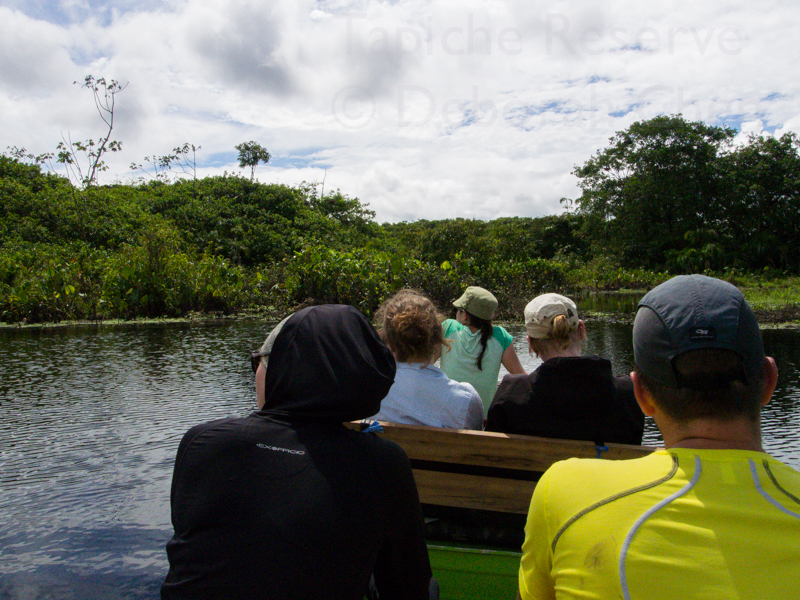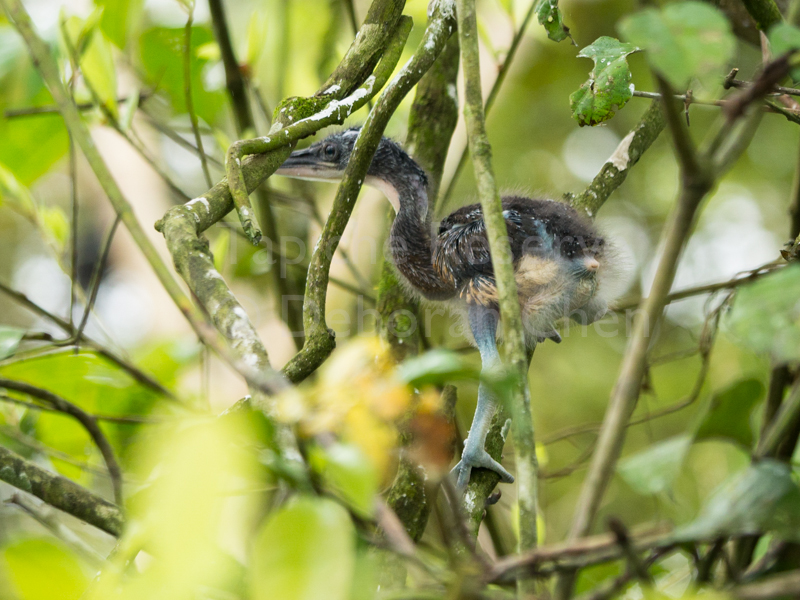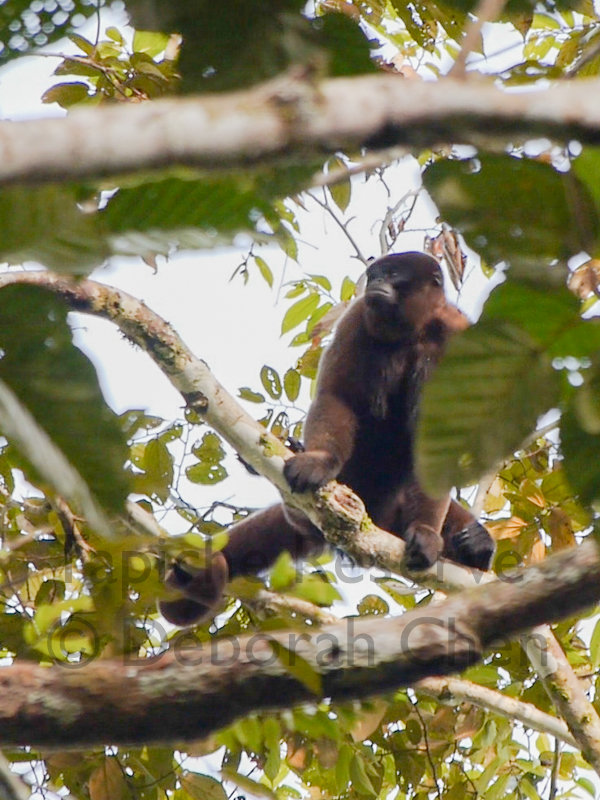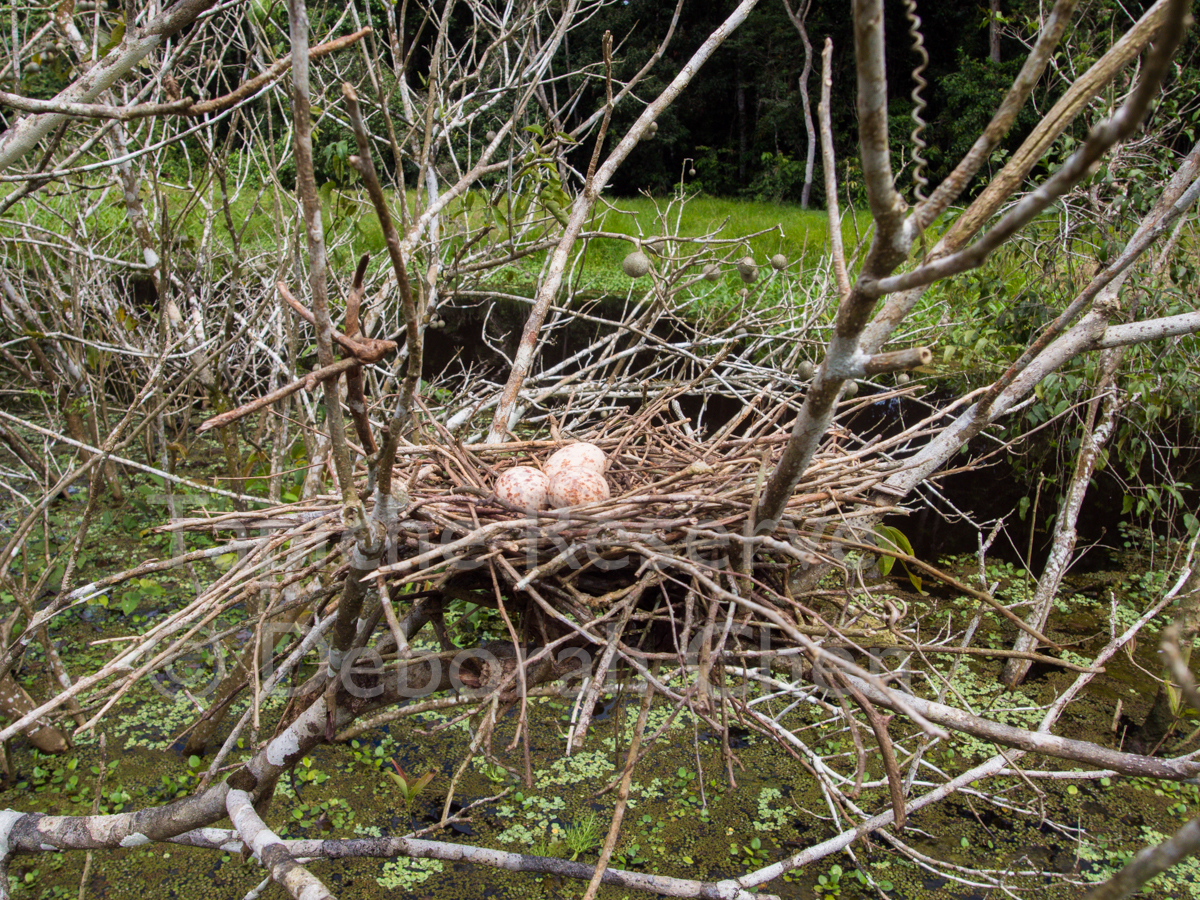Sit back, relax and enjoy our Jungle TV, or scroll down to meet some of our amazing residents.
Red Uakari
The incredible athleticism and expressive faces of the red uakari monkey (Cacajao calvus) at the Tapiche Reserve always make for a thrilling viewing. We enjoy multiple family groups of this rare species in healthy numbers (100+) roaming the reserve on both sides of the Tapiche River. Very little is formally documented about these monkeys in the wild, and we have witnessed behaviors that we have not found in any existing literature. Human destruction of the region's forest has concentrated them on our reserve, which is currently the only active conservation project along the Tapiche River.
Check out this blog post to read about the special moment when Murilo Reis, director of the Tapiche Reserve, saw a uakari monkey for the first time on the property.
Agami Heron
For about 6 months each year, a 20-hectare area tucked at the end of a lagoon becomes the noisy breeding ground for hordes of aquatic birds like Agami Heron, Boat-Billed Heron, Cocoi Heron, Neotropical Cormorant, Anhinga, Hoatzin, Great Egret, Snowy Egret and Wattled Jacana. Before the reserve was established, locals would collect all the eggs to eat or sell. It took 2 years of looking after the area before the birds recovered their population, and now we're happy to welcome them back in greater numbers every year. Learn more about our Agami Heron Watch project.
Woolly Monkey
Because woolly monkeys are a favorite hunting target and their birthrate is naturally low (one baby every 2 years), we only started observing large groups at the Tapiche Reserve at the end of 2014, about 4 years after the reserve was first established. We took this as encouragement that our conservation efforts were slowly paying off. The species we have at Tapiche is Poeppig's woolly monkey (Lagothrix poeppigii) and is listed as “Endangered” on the IUCN’s Red List with a decreasing population trend.
We hit some bumps in 2015 with a record number of hunters and loggers on the property. At the beginning of that year, we'd begun making informal notes on a beautiful group of 60+ woolly monkeys, including tiny babies clinging to their mothers’ backs and stomachs, juveniles just learning to climb and jump, and large mature adults sporting thick fur and weathered faces, all traveling and foraging together. This is the group showcased here. The high water season that year made it easy for poachers to enter the flooded forest of the reserve by boat, and we found new canoe trails cut into trees where this group of monkeys liked to pass. The last time we saw this group, only 4 juvenile individuals remained. The loss was heartbreaking, and these photos are a memorial to that family group.
In 2016 we were able to keep some of the most active poachers busy by hiring them construct our Canopy Observation Tower. Because these men were literally too busy working on the project and didn't have the time or energy to organize hunting trips, the animals got a break from being pursued.
There aren’t many options for earning income in the area besides poaching and logging. We hope that our continued efforts at providing local people income through conservation encourages them to think of the forest as theirs to care for and preserve.
Babies
In this section we celebrate signs of hope for the future of the Tapiche Reserve. Surviving to adulthood is a challenge for any living being in the jungle; conditions are brutal, competition is fierce and there is no shortage of natural predators, who are, in turn, targets for other predators. As human occupation of the riverside continues to grow and more people leave cities to seek economic opportunities in the jungle, humans easily take their place as the greatest threat to the forest and wildlife. On the flip side, we see great potential for humans to become nature’s best stewards, and this is what we work towards at the reserve. The presence of these young animals on the reserve is truly one of our great inspirations.
We hope we’ve been able to give you a glimpse of both the astounding beauty and value of this area as well as its fragility and the many threats to its healthy survival. Learn more about Conservation, or to meet other residents that call the reserve home, go to our Biodiversity page. If you do make it to the reserve, where the wildlife is truly wild, we guarantee you’ll never look at a zoo the same way again!
Find out if Tapiche is right for you, or Contact Us to start your jungle adventures!
Banner photo: baby Hermit (Phaethornithinae)
© Deborah Chen


















































